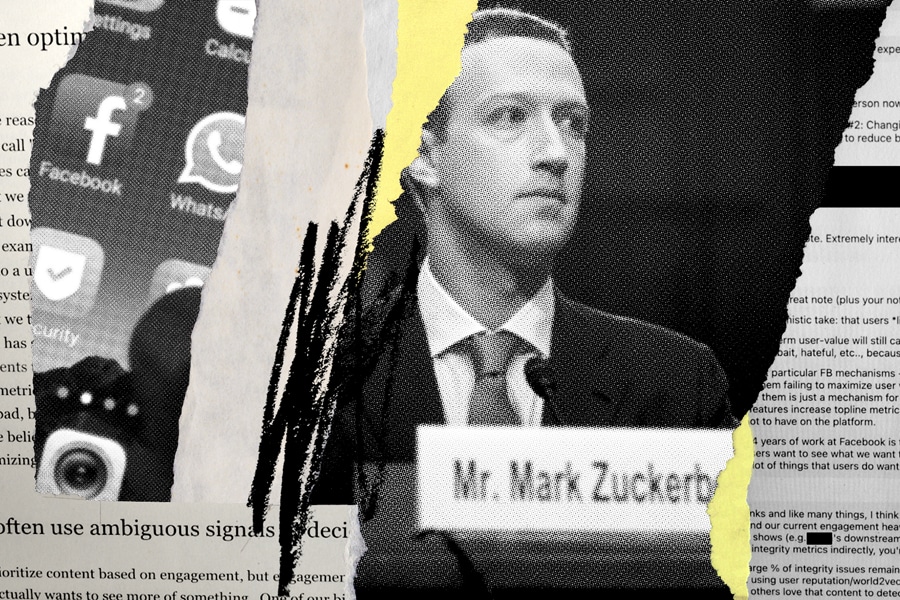
Facebook wrestles with the features it used to define social networking
As the company confronts crisis after crisis on misinformation, privacy and hate speech, a central issue has been whether the basic way that the platform works has been at fault
 Likes and shares made Facebook what it is. Now, company documents show, it’s struggling to deal with their effects. (Illustration by Mel Haasch; Photography by Tom Brenner/The New York Times)
Likes and shares made Facebook what it is. Now, company documents show, it’s struggling to deal with their effects. (Illustration by Mel Haasch; Photography by Tom Brenner/The New York Times)
SAN FRANCISCO — In 2019, Facebook researchers began a new study of one of the social network’s foundational features: the Like button.
They examined what people would do if Facebook removed the distinct thumbs-up icon and other emoji reactions from posts on its photo-sharing app Instagram, according to company documents. The buttons had sometimes caused Instagram’s youngest users “stress and anxiety,” the researchers found, especially if posts didn’t get enough Likes from friends.
But the researchers discovered that when the Like button was hidden, users interacted less with posts and ads. At the same time, it did not alleviate teenagers’ social anxiety and young users did not share more photos, as the company thought they might, leading to a mixed bag of results.
Mark Zuckerberg, Facebook’s chief executive, and other managers discussed hiding the Like button for more Instagram users, according to the documents. In the end, a larger test was rolled out in just a limited capacity to “build a positive press narrative” around Instagram.
The research on the Like button was an example of how Facebook has questioned the bedrock features of social networking. As the company has confronted crisis after crisis on misinformation, privacy and hate speech, a central issue has been whether the basic way that the platform works has been at fault — essentially, the features that have made Facebook be Facebook.
©2019 New York Times News Service







